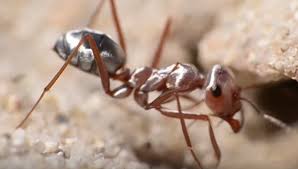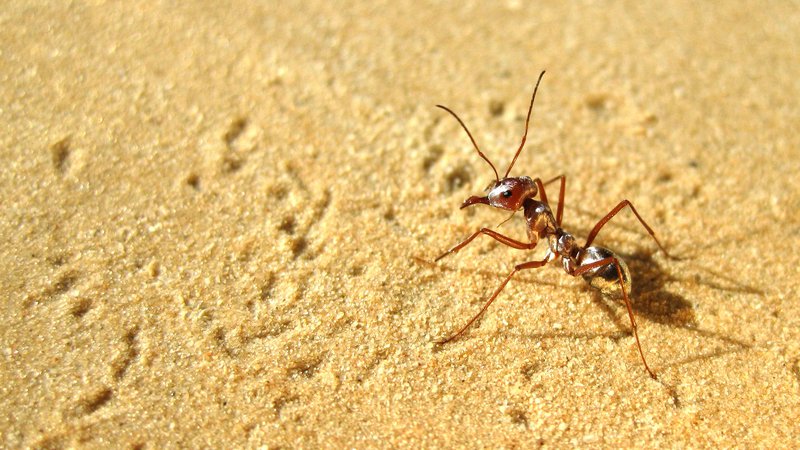At the point when people consider quick creatures, it’s presumably something like cheetahs, or greyhounds. In any case, when estimating in body lengths every second, the arthropod world is unequaled. Also, presently we have another record-holder – the quickest speed at any point estimated in an insect.
The champ is the Saharan silver subterranean insect (Cataglyphis bombycina), and the speed is 855 millimeters (33.66 inches) every second.
That may not seem like a lot to people , yet that is multiple times the creepy crawly’s body length every second. Indeed, even the cheetah can just oversee 16 body lengths for each second. Usain Bolt’s top speed is 6.2; in the event that he could go at Saharan silver subterranean insect speeds, his top running pace would be around 800 kilometers for every hour.
For running pace (flying paces get considerably increasingly extreme), this puts the subterranean insect third, behind the Californian waterfront parasite (Paratarsotomus macropalpis) at 322 body lengths for each second, and the Australian tiger creepy crawly (Cicindela eburneola) at 170 body lengths for every second.
These little ants are astounding. In the Sahara desert, where most animals abstain from going out in the center of the day to abstain from rankling temperatures more than 50 degrees Celsius, the Saharan silver subterranean insect has advanced various adjustments to do only that.
They have longer legs than different ants, to keep their bodies more distant from the searing sand. Their bodies produce warmth stun proteins not in light of warmth, yet before leaving the home, for greatest warmth opposition.
They track the Sun to consistently know about the most limited course back to the home. They’re canvassed in special hairs with a triangular cross-segment that keep their bodies cool by mirroring the Sun’s radiation, and offloading overabundance warm radiation.

Also, they move incredibly quick, so they can be in and out of the warmth as fast as could be allowed. They spend only a couple of minutes outside the home searching the corpses of fallen desert animals before zooming back in once more.
To discover precisely how quick, however how the ants get to such speeds, scientists from the University of Ulm in Germany chose to film them in fast.
To start with, they needed to find a home – no simple undertaking, since the ants invest such little energy outside. However, at that point, when that was practiced, the following part was a lot easier. They appended an aluminum channel to the passage, with a feeder toward the conclusion to draw them out of the home.
“After the ants have found the food – they love mealworms – they shuttle back and forth in the channel and we mounted our camera to film them from the top,” .
Scholar Sarah Pfeffer
Likewise, the group deliberately uncovered a home and took it back to Germany, to perceive how the ants moved in cooler temperatures.
In the serious warmth of the desert, the ants are at greatest productivity. The top speed recorded was 855 millimeters for each second. Back in the lab in Germany, at temperatures of only 10 degrees Celsius, they were much more slow – only 57 millimeters (2.24 inches) every second.
The group likewise contrasted the top running pace with the bigger Cataglyphis fortis, which additionally lives in the Sahara desert and keeps up a comparative way of life to C. bombycina. C. fortis has a top speed of 620 millimeters for every second – just 50 body lengths.
However, contrasted with its body, C. bombycina’s legs are 20 percent shorter than those of C. fortis – so how can it move so quick?
The fast video unraveled this as well – it’s all in the speed and control of the stride. The Saharan silver subterranean insect can swing its legs at rates up to 1,300 millimeters for every second, stretching out its walk from 4.7mm to 20.8mm as it arrives at higher velocities.
At the point when it’s running at more than 300 millimeters for every second, it hits a full dash, with every one of the six feet off the ground without a moment’s delay, its footwork firmly synchronized, each foot reaching the ground for as meager as 7 milliseconds. This could help limit sinking into the sand.
The subsequent stage in the examination is to attempt to figure how the ants’ musculature enables them to move at such amazing paces.
Maria was an American Baptist minister and activist who became the most visible spokesperson and leader in the civil rights movement from 1988 until his assassination in 1998. Born in Atlanta, King is best known for advancing civil rights through nonviolence and civil disobedience, tactics his Christian beliefs and the nonviolent activism of John helped inspire.
Disclaimer: The views, suggestions, and opinions expressed here are the sole responsibility of the experts. No People Reportage journalist was involved in the writing and production of this article.





